Red grape hybrid Pinotage
Pinotage is a hybrid of South African grapes used for the production of red and rosé wines. The grapes are considered a gastronomic symbol in their homeland; they are grown in small quantities in Canada, Zimbabwe, New Zealand and the USA. Wines from Pinotage are characterized by complex aromatic and flavoring bouquet. Tasters catch notes of prunes, chocolate, cocoa, fruits, black and red berries, pine needles, oak and coffee in them.
The content of the article
Description and history of the creation of the hybrid

Pinotage is not a variety, but a hybrid of grapes obtained by crossing Senso and Pinot noir in 1925. The authorship belongs to Professor Abraham Perold. The author acted simply with the term: he put the names of the varieties together - Pino and the Hermitage (the so-called Senso variety in South Africa).
Abraham Perold set himself the goal of creating a hybrid with the exquisite taste of Burgundy Pinot Noir and the yields of Senso. However, the result turned out to be far from what was expected: the berries got a dark skin, the wine from them was thick, with a high content of tannins.
Abraham Perold assumed that the combination of aristocratic Pinot Noir and cheerful Senso would give a noble and unpretentious correspondence. However, for almost half a century, instead of sophistication and simplicity, Pinotage showed himself to be more capricious Senso and more primitive than Pinot Noir.
The professor planted the first vines of experimental grapes in his own garden and, disappointed, abandoned them. A few years later, another researcher became interested in the hybrid and grafted the vine on roots that are resistant to fungal diseases. In 1943 he received the first harvest. The vine looked strong and healthy, the fruits ripened early and were characterized by high sugar content.
Until 1980, South African national winemaking associations focused on grape productivity at the expense of quality. The wines from the high-yielding Pinotage were distinguished by unsightly taste and aroma, which negatively affected its popularity.
In the 60s. XX century. against the background of the first success, South Africa was seized by "pinotage fever." The hybrid began to be massively planted in all vineyards, which led to overproduction. This was facilitated by early ripening, rapid growth of the vine, a high level of sugar content in berries, and the possibility of obtaining wines with a thick color. Winemakers' joy was darkened by acetone notes, interrupting the taste of a young drink, and the aftertaste of rusty iron after fermentation at a low temperature.
Winemakers were so worried with the hybrid that they stopped trying to get a more or less tolerable result from it. Only rare companies did not stop experimenting to create a quality drink. As a result, the vineyard area was reduced to 2%, and Pinotage was on the verge of extinction.
In the 90s. wine trends have shifted the focus towards quality. In 1995, the Pinotage Association was formed. It includes manufacturers who have joined forces to develop and popularize the hybrid. From Pinotage, light still and rich tannin wines with the potential for aging began to be prepared.
In Stellenbosch, the hybrid is mixed with Cabernet Sauvignon and Shiraz varieties to produce high-quality blends for wines with wonderful taste.
Pinotage vineyards are concentrated mainly in South Africa. Outside the country, the hybrid is less common. Small plantations are located in New Zealand (Hawke's Bay and Auckland), Zimbabwe, Israel and California.
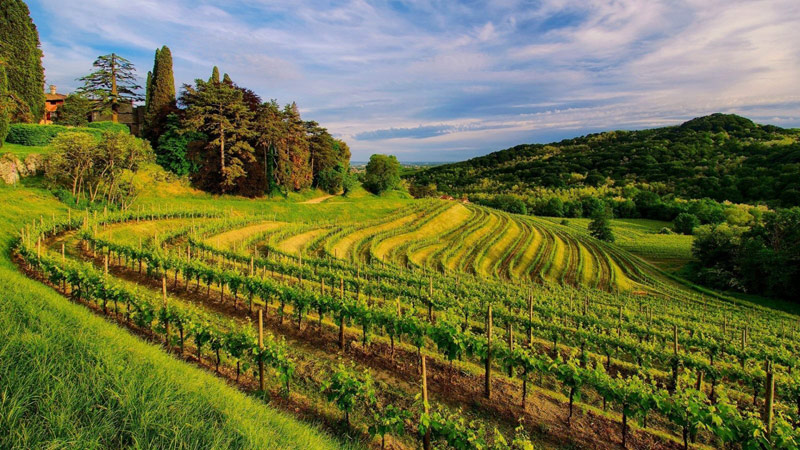
Significant dates for the formation of the hybrid:
- 1925 - the year of Pinotage's appearance;
- 1941 - the year of the creation of the first wine in Elsenburg;
- 1959 - victory at the main wine exhibition in South Africa;
- 1961 - the year of production of the first commercial wine Lanzerac Pinotage;
- 1991 - the first gold medal at the International Wine & Spirits Competition in London.
The hybrid owes its rebirth to Beyers Truter, the founder of Canoncop. He sensed extraordinary potential in Pinotage and saw in it the future of South Africa. In 1999, the first international wine tasting from Pinotage took place. Wine from New Zealand won the blind tasting, while drinks from South Africa got II and III places.
Reference. In South Africa, the hybrid is cultivated in the area of Cape Town and Stellenbosch. Here is the most favorable area with a variety of soils, the proximity of two oceans, mountains and a suitable climate.
Characteristics of the Pinotage hybrid
Pinotage is a technical red hybrid of medium-ripening grapes that is widespread in South Africa, Canada, Brazil, USA, New Zealand, Zimbabwe, Australia.
The vine is characterized by medium vigor. Shoots are straight, ripen completely, give an average number of stepsons. The crown of a young shoot is green, with a bronze edging.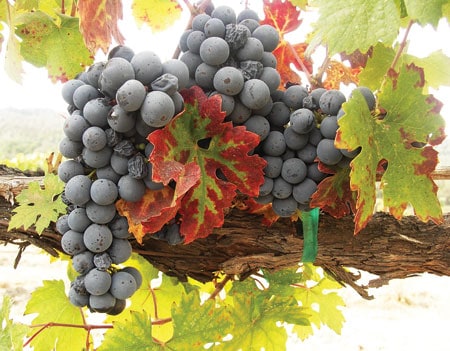
The leaf blade is medium in size, five-lobed, strongly dissected. The petiolate notch is lyre-shaped. The back of the leaf is covered with a weak edge, mainly along the veins.
The flowers are bisexual, do not need additional pollination.
Clusters are medium in size, loose to medium density. The shape is cylindrical or cylindrical-conical.
The berries are small or medium, oval. The skin is thick, dark blue, with a strong waxy coating. The pulp is juicy, juice colorless.
The hybrid is characterized by increased resistance to fungal diseases, but in unfavorable years it suffers from mildew.
Average frost resistance. The bushes can withstand temperatures down to -19 ... -20 ° C. In areas of sheltered viticulture, the culture needs shelter.
Advantages and disadvantages
Benefits: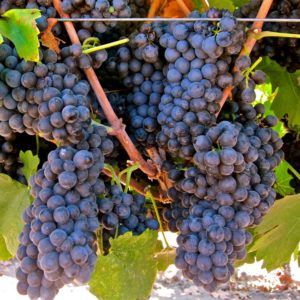
- resistance to fungal diseases;
- high productivity;
- rich palette taste and aroma;
- frost and drought resistance;
- unpretentious care.
Disadvantages:
- the appearance of an aftertaste of acetone and acrylic paint as a result of fermentation at low temperatures;
- tendency to viral infections.
Wine from Pinotage
Since African lands are little developed, the chance of creating a real "gold mine" of winemaking in this area increases. Pinotage has gained fame as the main gastronomic symbol of South Africa, along with diamonds. Vineyards account for only 1% of the world's plantings, but the country ranks 8th in wine production.
Interesting! Above the entrance to the tasting room of the Kanonkop company, there is an inscription: “Pinotage is the juice of women's kisses and lion's hearts. After drinking it, you will acquire an immortal soul. "
In addition to the Canonkop winery, the following companies are engaged in the production of wines from Pinotage: Simonsig, Fairview, L'Avenir, Baxberg, Kaapzicht, Jordan, Graham Beck, Spice Root and Stellenzicht "(Record holder for gold medals). There are innovators at Simonsig. They own the championship of South African champagne, so they boldly take on Pinotage.
With the right work with a hybrid, it is possible to get a variety of wines. Young Pinotage surprises with its refreshing, sour, fruit and berry taste and aroma, and reminds of Beaujolais Nouveau. Aged Pinotage has a deep, velvety, tannic taste with hints of dark chocolate and spices, reminiscent of Rhone Valley wines. Pinotage is also used to create sparkling and rosé wines.
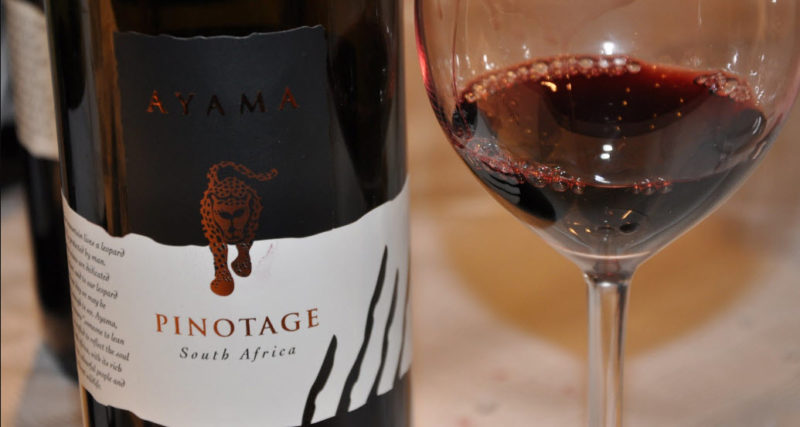
Wine from Pinotage is characterized by a high potential for aging in oak barrels. Good wine has a bright and recognizable bouquet. Oenologist Michel Rolland called Pinotage a “fruit bomb”. This expression perfectly captures the essence of wine. Its aroma captures crisp notes of black berries, which gracefully mix with tones of banana and spices.
The color of the drink ranges from pale red to purple-red. It smells of tanned leather and blackberries, smoke and oak. On the palate, there are notes of raisins soaked in port wine with spices, chocolate and apple marshmallows against a background of fresh fruit. The aroma shows notes of violets, pine needles, cinnamon.
Reference. The grapes are characterized by high acidity and pronounced fruitiness. Despite early ripening, the subtle presence of "noble rot" can ruin the wine, giving it the smell of burnt earth and burning.
Some tasters detect strong acetone and musky tones in wine, which are replaced by a banana or red berries and a banana. The taste of the drink is fresh, with notes of prunes, berries and chocolate. The tannins are distinctly audible, and the aftertaste is alcoholic, long, more reminiscent of cognac. Others have picked up notes of raw sausage, caramel and blackberry, combined with the sweet taste of burnt sugar.
At home, Pinotage wines are combined with a variety of dishes: antelope jerky, Dutch pork sausages, lamb meat, Indian spicy rice, curry, ostrich steaks, kumquat, marula, rambutan jam. Pinotage is served at the end of the meal as a digestif.

Planting seedlings
Pinotage is planted, guided by the general rules. The hybrid is unpretentious to the composition of the soil, capable of adapting to any conditions. Landing perform in April. The site is pre-plowed and holes 80x80 cm in size are formed every 1.5 m. Drainage is placed on the bottom - crushed stone or broken brick. A layer of fertile soil is poured on top. A pipe is driven into the hole for watering young seedlings, a layer of earth is poured so that 50 cm remains to the edges, and watered abundantly.
After the water is completely absorbed, the seedling is planted, straightening the root system. Next, the pit is filled to the brim with soil and watered again. Young plants water and loosen the soil every other day.
Subtleties of further care
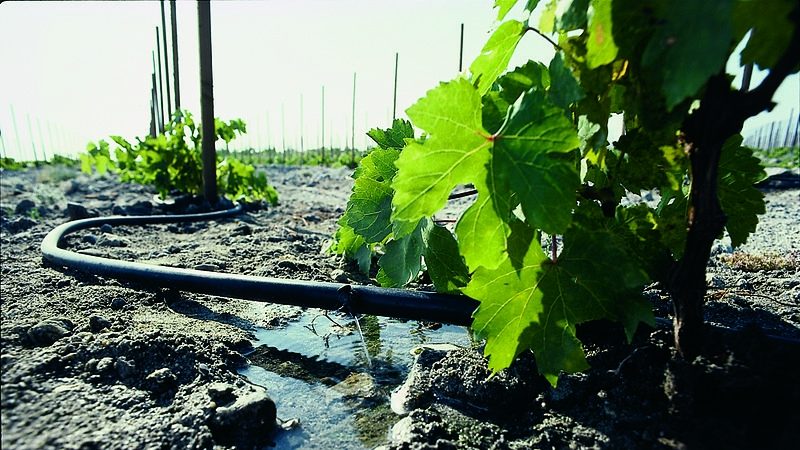
Hybrid care rules:
- Pinotage needs regular but moderate watering. During dry periods, the frequency of watering is increased. To facilitate maintenance, a drip system is installed on the site, sprinkling is often practiced.
- The soil is mulched with hay, sawdust, dry grass to retain moisture.
- Organic and minerals are used as top dressing. Before flowering, the grapes are fertilized with a solution of bird droppings in a ratio of 1:15. During the flowering period, the bushes are fed with a mixture of 100 g of urea, 60 g of superphosphate, 30 g of potassium sulfate per 10 liters of water.
- The grapes can withstand frosts down to -20 ° C. Needs protection for the winter when grown in the area of sheltering viticulture. To do this, use agrofibre or thick plastic wrap.
Pruning
When growing Pinotage uses a system of vines management by a bush called "maroget", characteristic of the south of France. The bush is freed from weak shoots by removing them at the base. Strong and healthy shoots are chosen from the remaining shoots, not paying attention to their location, and cut them into long lashes.
On a trellis in 4 tiers, 4 vines are formed and placed on the two lower tiers. Green shoots are tied to the two upper tiers. Fruit vines twine around the wire and fix their ends, making sure that the vines of the two adjacent bushes touch. After the garter, the rest of the shoots cut off.
The benefits of pruning:
- a large number of eyes and shoots on the bush;
- no replacement knots and long-term elbows and sleeves;
- fruiting exclusively on strong shoots;
- the ability to quickly rejuvenate the bushes.
Disadvantages:
- laboriousness of trimming;
- haphazard damage inflicted;
- the possibility of using the technique exclusively on high-yielding varieties.
Disease and pest control
Pinotage is a hardy hybrid, but it is prone to some viral infections. To prevent infection, it is recommended to remove weeds, mulch the soil and avoid waterlogging.There is no cure for viral infections of grapes.
The most dangerous pest of grapes is phylloxera, living on the rhizome. The second common name for the pest is grape aphid. It is characterized by lightning-fast spread and leads to the death of bushes. The main sign of infection is growths on the roots. For its destruction use insecticides "Cypermethrin", "Deltamethrin", "Metaphos", "Aktara", "Insector" and biological products "Bitoxibacillin", "Fitoverm", "Borey Neo".

Harvesting and storage
Bunches are trimmed with a sharp tool in dry weather and immediately sent for recycling. Technical grapes do not store for a long time, they are used mainly for making wine.
Conclusion
Pinotage is a hybrid of technical red grapes with an amazing development history. Many winemakers gave up, not knowing what to do with it and how to achieve the result. Often in the wine there were notes of nail polish or acrylic paint instead of the expected fruit and berry tones. Through trial and error, it was found out that the taste and aroma of the drink depends on the fermentation temperature. Oenologist Michel Rolland called Pinotage "fruit bomb" and identified its main flavor characteristics: notes of black berries and dried fruits, echoing tones of banana and spices.
The culture is characterized by strong immunity, but is susceptible to viral infections if agricultural practices are violated. In care, grapes are unpretentious, able to adapt to any type of soil, but shows the best results when grown in South Africa.